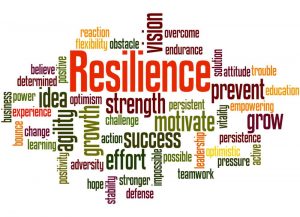One of the common attributes’ employees list for an ideal job is a stress-free work environment. Even if there was such a thing as a stress-free job, the reality is we would still carry our stress from home and other sources.
To make matters worse, a study from the Max Planck Institute for Human Cognitive and Brain Sciences, Leipzig indicates that stress is contagious. “Observing another person in a stressful situation can be enough to make our own bodies release the stress hormone cortisol.”
[1] Most of us are familiar with cortisol, but few know that over a thousand other harmful hormones flood the body under stress and can impact the body for several hours.
Why We Should Be Concerned About Stress
When we experience stress, we are more likely to communicate less effectively, make mistakes, and suffer from burnout, depression and anxiety.
Under stress, we have less access to our whole thinking brain and are more likely to make poor decisions which undermines performance.
Stress causes inflammation in the body and is said to be the primary cause of about 80% of all doctor visits.
When we enable our workforce to lower stress and become more resilient, we can see measurable and sustainable improvements in performance, reduce turnover, and improved personal health. This leads to increased organizational effectiveness, lower costs for insurance premiums, and fewer mistakes and accidents.
Warning Signs of Job Stress[2]
- Headache
- Sleep disturbances
- Lack of energy
- Trouble focusing
- Depression
- Anxiety
- Difficulty concentrating
- Short temper
- Job dissatisfaction
- Low morale
- Absenteeism
- Tardiness
Defining a Resilient Workforce
Resilience is the capacity to prepare for, recover from and adapt in the face of stress, adversity, trauma or tragedy. Resilient employees bounce back and recoup faster after a challenging situation. Thankfully, we can teach our workforce how to build their capacity for resilience and to manage their energy.
A resilient workforce has a cognitive and physiological advantage. This means that they are less impacted by stressful situations and can better observe and respond rather than be led by their emotions.
Imagine a workforce with these characteristics:
- Increased personal resilience and energy levels
- Ability to think clearly under pressure and discern appropriate solutions to problems
- Increased ability to maintain situational awareness
- Improved reaction times and coordination
- Low rates of illness, injury or disability
- Better communication
- Enhanced creativity and innovation
How to Create a Resilient Workforce
Thankfully, there are resources and training programs available that lead to sustainable change for increased resilience.
There are also changes we can make within our organizations to prevent job stress.
- Play to your employee’s strengths by creating a workload that is in line with their capabilities and capacity.
- Provide training in areas that are most challenging to complete successfully. This allows the employee to improve, which increases confidence and demonstrates your willingness to invest in their success.
- Help your workforce understand the importance of their position to the company’s success, client satisfaction and even quality. Today’s workforce wants to feel engaged, have meaning, stimulation, and growth opportunities.
- Provide coaching (internal or external). If your employee has an opportunity to talk to a professional coach, they will be better able to focus while they are at work.
- Clearly communicate expectations for roles and responsibilities and career development. This helps reduce uncertainty and decreases an intent to leave the job.
- Allow time for breaks; employees will come back to the office less stressed and more productive.
- Offer flexible work schedules for valued employees that are caring for others. This allows them the time they need to take care of others who need them, and in turn, enables them to be present at work while they’re there.
Above is just a short list of many opportunities to show your employees that you care about their stress levels and are invested in helping them become more resilient. These also reflect your concern for the health of the organization. By offering opportunities for open dialogue, encouraging resilience and reducing workplace stress, your company will develop a reputation as one that cares about its workforce.
For “tried and true” methods, you may wish to hire a firm with the experience and vision to address this vital opportunity to build workforce resilience.
–
Stacey Bevill, BCC, ACC, NCC, MPM®
President of Golden Career Strategies, Coach & Consultant
Stacey has over 20 years of business and marketing experience and has master’s level certifications in coaching, marketing strategies, entrepreneurship, and project management. Bevill is passionate about improving communication, employee engagement and motivation, mental fitness, and improving processes and quality. She also strongly supports individuals in transition and those interested in personal leadership and vision, resiliency, and wellness.
Stacey is a Board Certified Coach from the Center for Credentialing and Education (CCE), certified by the internationally acclaimed Newfield Network Coaching Institute and credentialed by the International Coach Federation (ICF). Additional training includes Positive Intelligence (by founder Shirzad Chamine, 2nd cohort), Conversational Intelligence Enhanced Practitioner (by founder Judith Glaser), Inspired Leadership from Case Western Reserve University, and Coaching for Managers from the University of California, Davis. Stacey is also a HeartMath® Certified Coach, Trainer, and Stress & Well-Being Assessment Provider. She is a Flow Energy Balance Indicator (FEBI®) Assessment Certified Coach (Leadership Patterns) and a Strong Interest Inventory® and MBTI® Certified Practitioner.
She has received “value-added” training for her manufacturing clients: ISO 9001:2015 Standard & Internal/Supplier Auditor, IATF 16949: 2016 – Understanding Standard and Auditing, Certified Local Change Agent (credentialed by APMG), Certified Master Project Manager® and has finished the classwork and passed the exam for her Lean Six Sigma Green Belt certification. Stacey is a graduate of Leadership South Carolina, Leadership Spartanburg, The Women’s Campaign School at Yale, The Spartanburg County Foundation’s Grass Roots Leadership Development Institute, and Furman Connections: Women Leaders of the Upstate. Bevill is an active volunteer with One to One: Women Coaching Women as a coach lead and volunteer coach and serves as one of four volunteer coaches in South Carolina for Stand Beside Them. She was awarded the Rotary International District Service Above Self award.
[1] Max Planck Institute for Human Cognitive and Brain Sciences, Leipzig, Your stress is my stress, https://www.mpg.de/research/stress-empathy
[2] The National Institute for Occupational Safety and Health (NIOSH), Stress at Work
https://www.cdc.gov/niosh/docs/99-101/default.html




Be the first to comment on "Workforce Resilience"